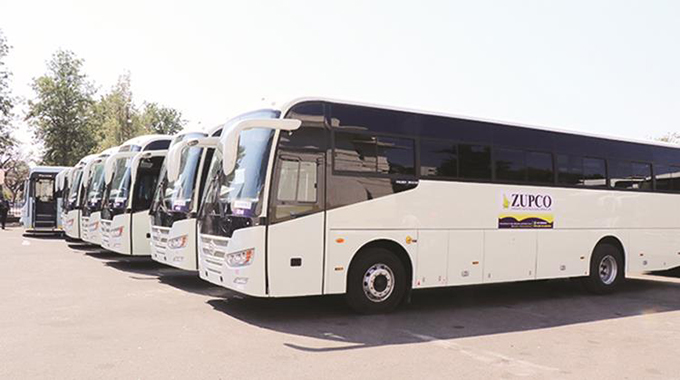Learners need safe transport system

Monica Cheru Creative Editor
A video of a South African commuter omnibus packed with schoolchildren made social media rounds last week. It appeared to be a gag as the tally rose above 20, 30 and then 40.
In Zimbabwean urban areas, it is common to see vehicles doing school runs stuffed way beyond their carrying capacity.
A school head in Harare said children who commute for long distances face a lot of challenges.
“Some of the children wake up very early and by the end of the week they are really worn out and cannot concentrate in class,” the head said.
She said children from disadvantaged families end up with erratic attendance records and perform poorly. “We had one case of a child who would come to school maybe twice a week because the parents could not afford the daily commuting fare. There are also cases where the child goes to the teacher and claims that they have lost their bus fare for the trip back home. But you can see that the child is ashamed of admitting that they left home without enough money,” she said.
In addition, some of the learners become delinquents because there is too much unsupervised leeway. A teacher at a Government primary school in Harare recently told parents in a meeting to stay in touch with him to check whether their Grade 6 children were indeed attending classes.
He said there was a case at the school where a learner was struck off the register for missing more than eight consecutive days. The parents had no idea until the following term because the boy left home in his school uniform each morning and returned as usual. In my opinion, drug usage and early sex debut are probably higher in children that commute than those who attend nearby schools if research is carried out.
Private transport puts learners at risk
Many school runs are carried out by private players. With high unemployment rates, it is good that people are finding entrepreneurial opportunities where they can.
But there is need for regulation. Some vehicles being used are not appropriate for the job as shown by the cramming of learners in boots of vehicles like Honda Fits. There is no adequate insurance cover. In case of an accident, the driver or owner and the parents and guardians are saddled with unexpected bills. This also influences the type of medical attention that the victims of the accident will access. But most worrying, the driver is not certified as a public transport driver and it is common to see them driving recklessly.
Last year, this writer was approached by a learner from a Government girls school in the CBD. She was wandering in town just before 6pm.
“Good evening ma’am. Please may you help me. I don’t have money for kombi fare. I only realised it when I was about to board and I was searching in my bag. Please may you call my mother and tell her I am stranded here? Here is her number.”
With male and female predators on the loose, I shuddered at the risk that the girl was facing. She could fall prey to commuter omnibus crews if she asked for a free lift home. She could be kidnapped and murdered. I had to rein in my imagination.
I told her that I did not want to give her money, just in case this was a con trick and I would be encouraging her. And although she had indicated that she was going in the same direction as I was headed, I did not want to give her a lift because that could make her believe that it is okay to get into strangers’ cars.
So I took her to the kombi and paid her fare directly to the conductor. I told him to keep the money if she decided to drop off before the kombi left the rank. I then asked the elderly woman next to the young girl to keep an eye on her. At one time young children disappeared. The heart of every parent and guardian who has to risk public commuting for their child suffers constant stress as they worry if today is the day that the child will not return home.
Zoning must return effectively
In the past, public schools used zoning to limit commuting among schoolchildren. The policy is still effectively in place as heads should only turn away prospective learners from their feeder areas when there are no vacancies.
But in reality, you will find that learners from the feeder areas do not get places at the nearest school. But oddly enough, some learners who have to catch two rides either way will secure places.
Our family has lived in this area for more than 20 years. But it was a challenge to get a place for my granddaughter at the local school. I ended up with no choice, but to register her with a private school that has a transport arrangement for our area.
A school head in the Mbare-Hatfield district said that the problem begins with people within the community.
“When we register children for ECD or Grade One, we require that parents and guardians produce proof of residence in the form of municipal bills. As you know there are many tenants these days so as long as someone produces a fairly current bill we accept it. It is only later that we realise that we have children from as far afield as Chitungwiza while we would have turned away learners from the area. But what can we do? Once a child is registered we cannot then chase them away.”
The shortage of schools and corruption in securing vacancies has destroyed the zoning system. It must be returned to protect young children.
Learners are a significant constituency of the commuting public. With the Government pushing to bring back order to the public transport system, there must be a plan for dedicated commuter omnibuses that are distinctly branded. The buses also save learners from sexual predators and other dangerous adults who would have no access to them.
IT can inform policy right now
The bottom line in all this is that there are just not enough schools in Zimbabwe. Children are forced to commute because they cannot access desirable levels of education services in the areas where they live.
From the 2000 schools that Government set out to build in 2016, less than 500 have been constructed so far. The 2000 more schools were inadequate in the first place. At the pace we are moving, by 2030 when the population is predicted to have hit the 30 million mark, the shortages of schools will be even more pronounced.
Government needs to make urgent plans to provide access to education for all now, not at some nebulous time in the future.
The 2022 national census will provide guidance on population figures and demographic segmentations which will inform the number of schools needed in each area among other amenities.
But we cannot wait until then for Government to realise that some children are failing to access the basic human right to education. ICTs can help the Ministry of Primary and Secondary Education carry out a baseline survey and create a needs map at low cost using the country’s high mobile penetration rate which is almost as good as 100 percent.
All the State would need to do is work with technical partners and have parents and guardians register all young people between the ages of 0 and 18, stating location and nearest public school. That way it would be easy to see which schools can be capacitated to take on extra learners using existing facilities, where annexes can be initiated and where new schools must be prioritised.
With a definite plan in place, it is easier to mobilise resources in addition to State coffers. Countries like China have already assisted with building of new schools. There are also many citizens who are involved in many education related drives who can rally around an organised cause to bring the greatest change where it matters most.








Comments